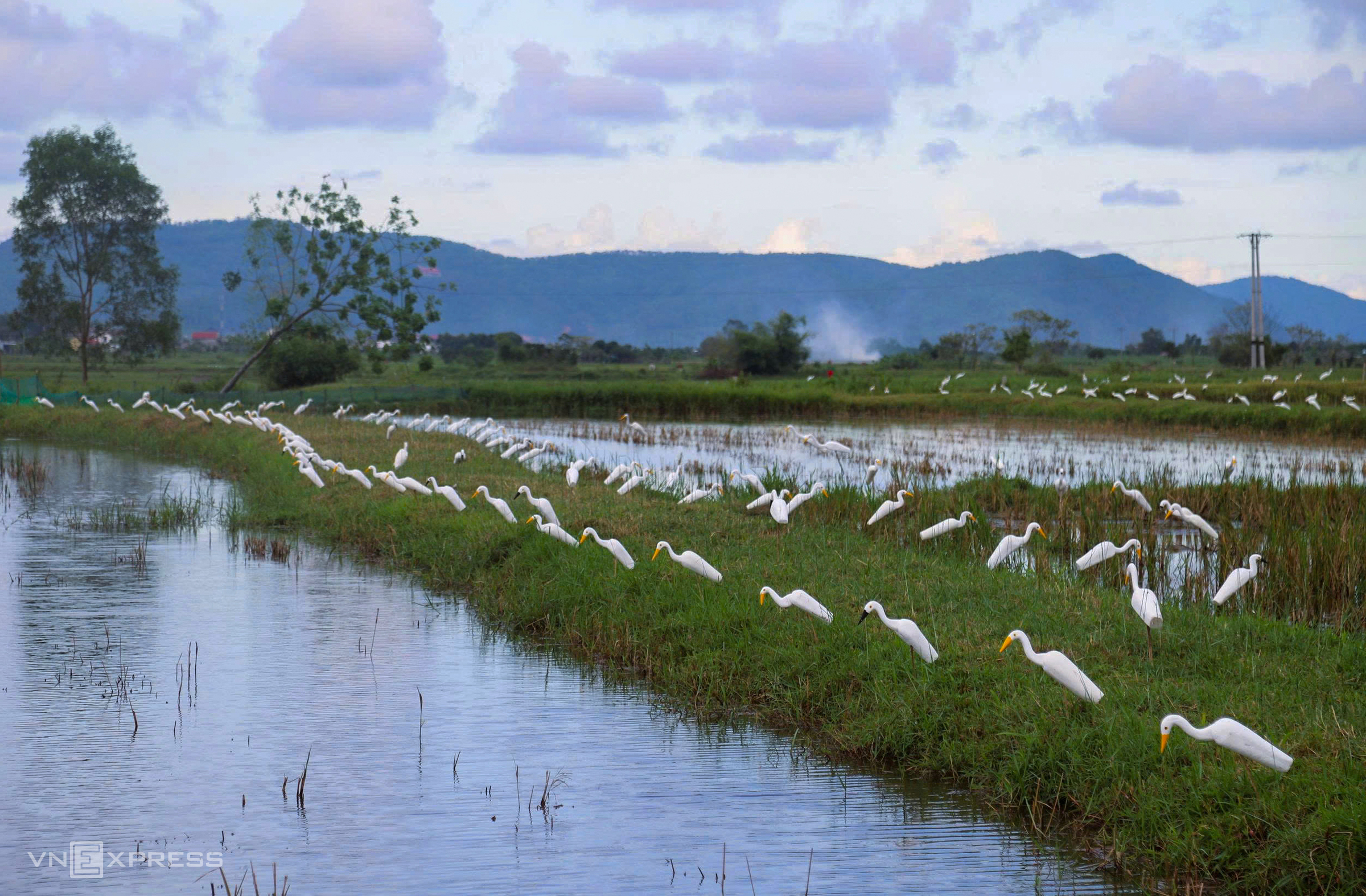 |
Every September, residents of formerly Dien Chau district’s semi-mountainous and coastal communes, including Tan Chau, Dien Phu, Dien Loc, Dien Tho, and Dien Loi, often set traps in the fields to catch egrets, herons, and other birds. |
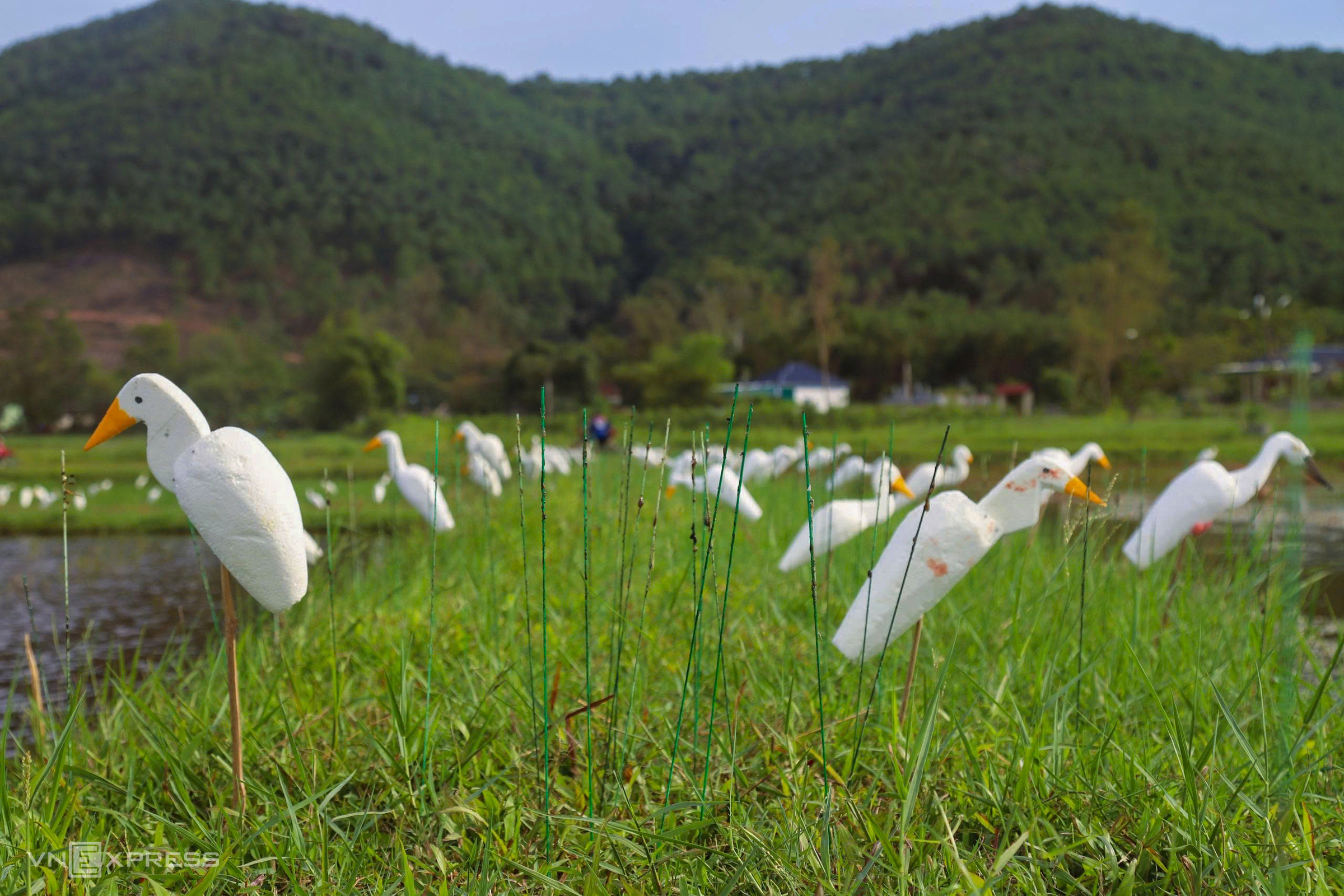 |
The bird traps are set both on the ground and in trees. Hunters have attached plastic rods and fake birds to branches to lure real birds. |
Thousands of fake egrets are densely planted in the fields of Tan Chau commune to trap migratory and wild birds.
Next to these decoys are super-sticky glue traps smeared on 50-60 cm bamboo sticks, creating a deadly snare. If a bird lands and its feathers touch the glue, it becomes trapped, and struggling only makes it stick tighter. These glue traps are placed so densely along the small roads leading to the fields that it's difficult to navigate them.
Fake egrets, herons, and other birds are made of styrofoam and painted to look exactly like real birds, making them difficult to distinguish from a distance.
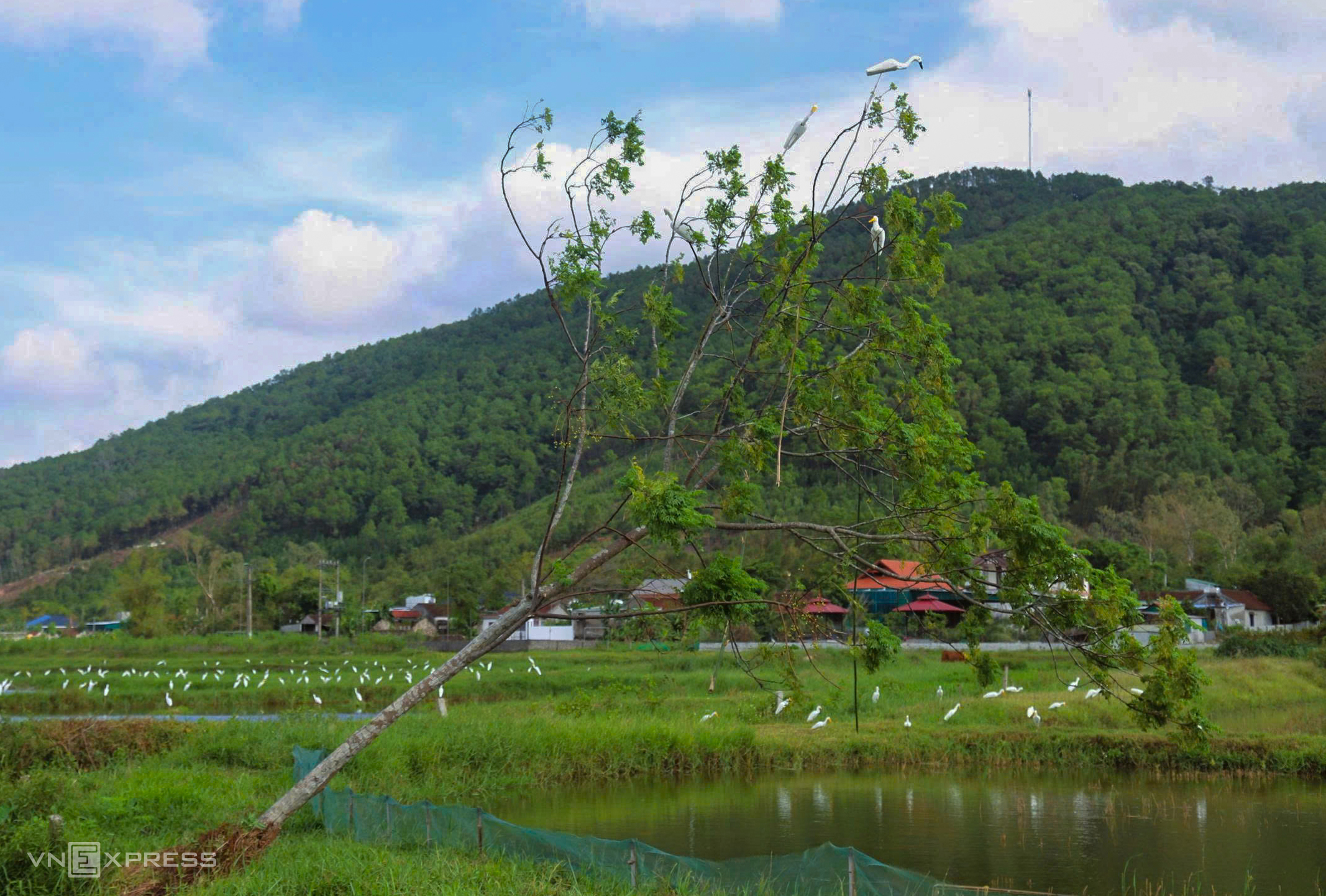 |
In addition to fake birds, hunters often place two or three real birds with their eyes sewn shut near the decoys in fields and ponds. Real birds, seeing the decoys and the live birds, feel safe to land and feed, only to become trapped by the glue-covered rods. |
 |
Nets are strung densely between tree branches in groves facing the river and sea to intercept birds flying out of the forest. |
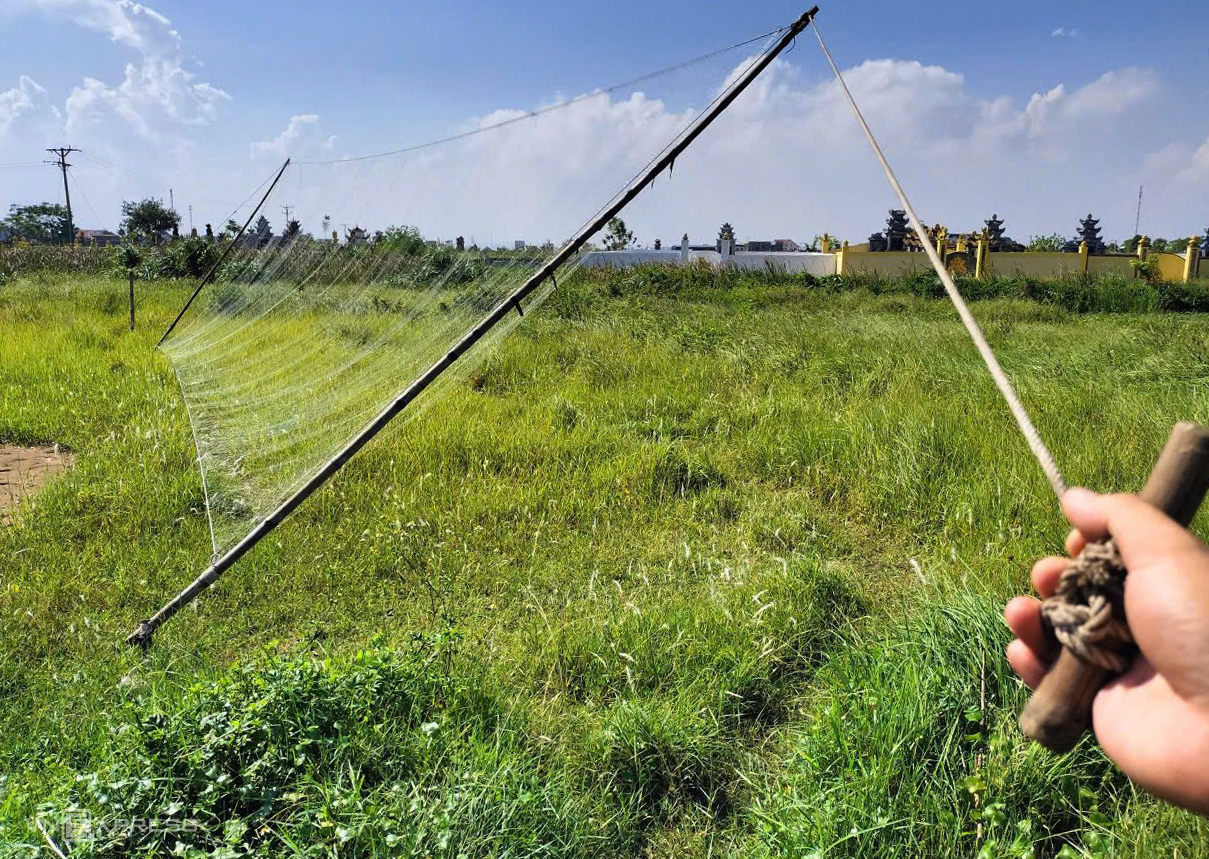 |
Hunters typically build leaf huts near the traps and hide inside to watch. When a bird is caught, they run out, remove the bird from the glue trap, and put it in a cage. "At the end of the summer-autumn rice harvest, many birds come from other places. With luck, one can trap up to a hundred egrets and herons a day," one hunter said. |
Besides setting traps in the fields, many people have strung 3-4 meter high and 6-7 meter wide nets on bamboo poles in abandoned fields, creating another type of trap.
The nets are connected to nylon ropes. Hunters watch from a distance, and when they see birds flying low, they pull the ropes to bring down the nets and capture the birds.
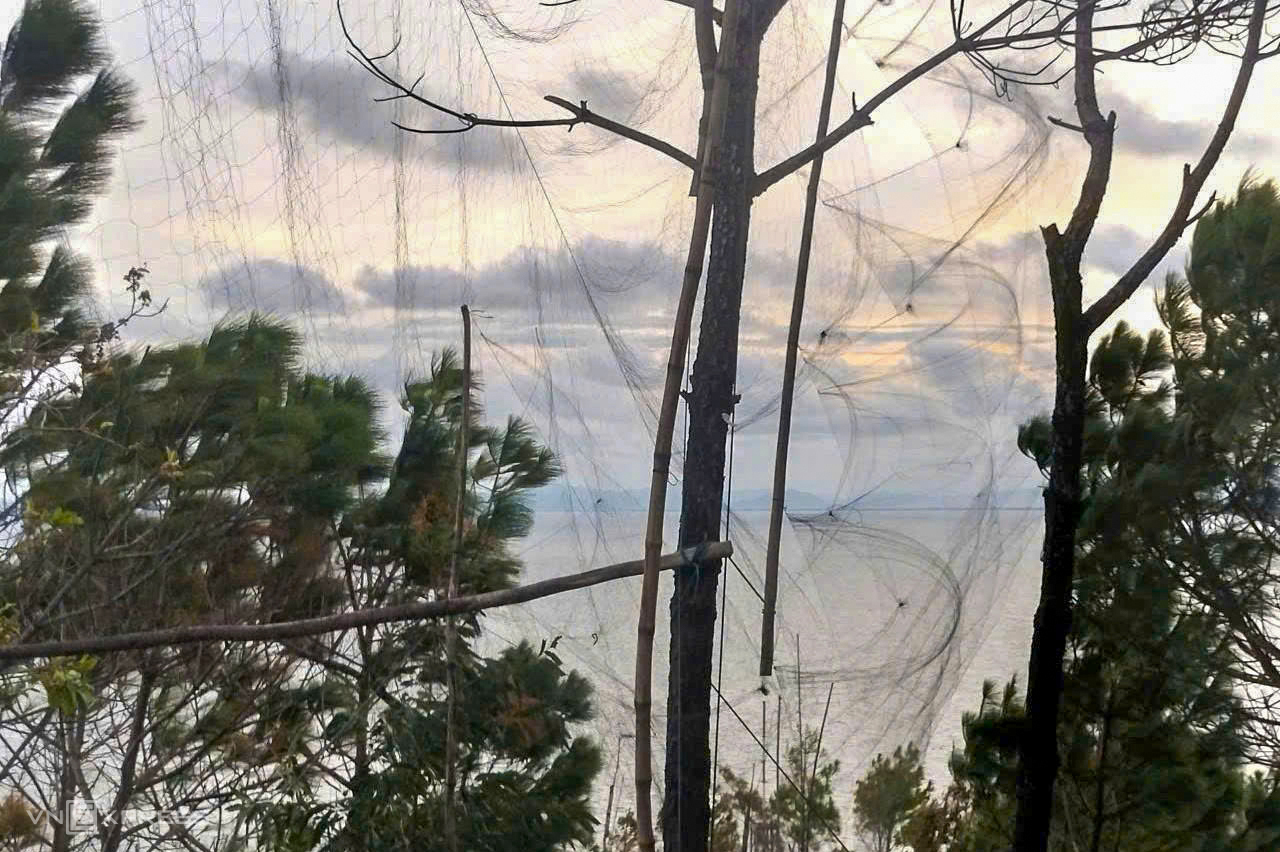 |
Trapped birds are sold at the market for 60,000-100,000 VND per bird, depending on the species. |
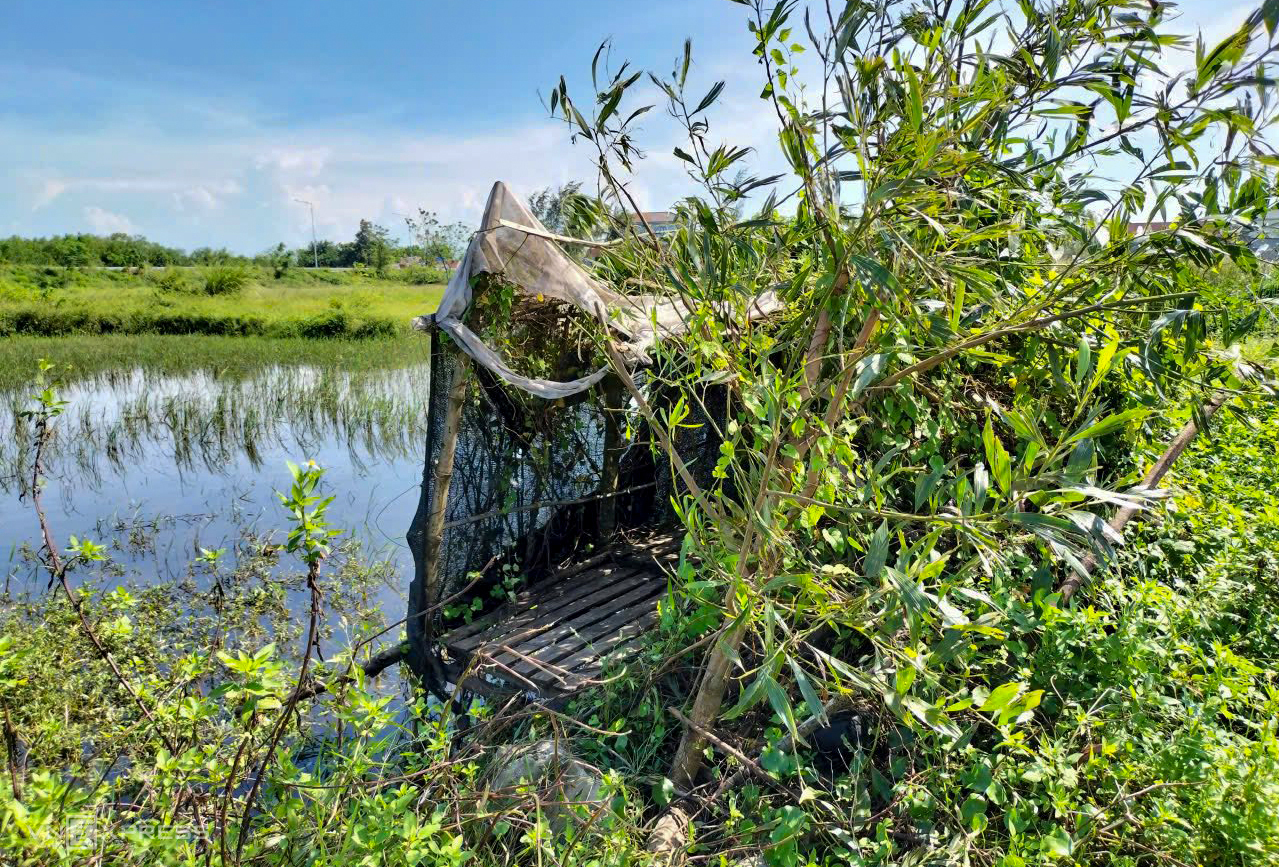 |
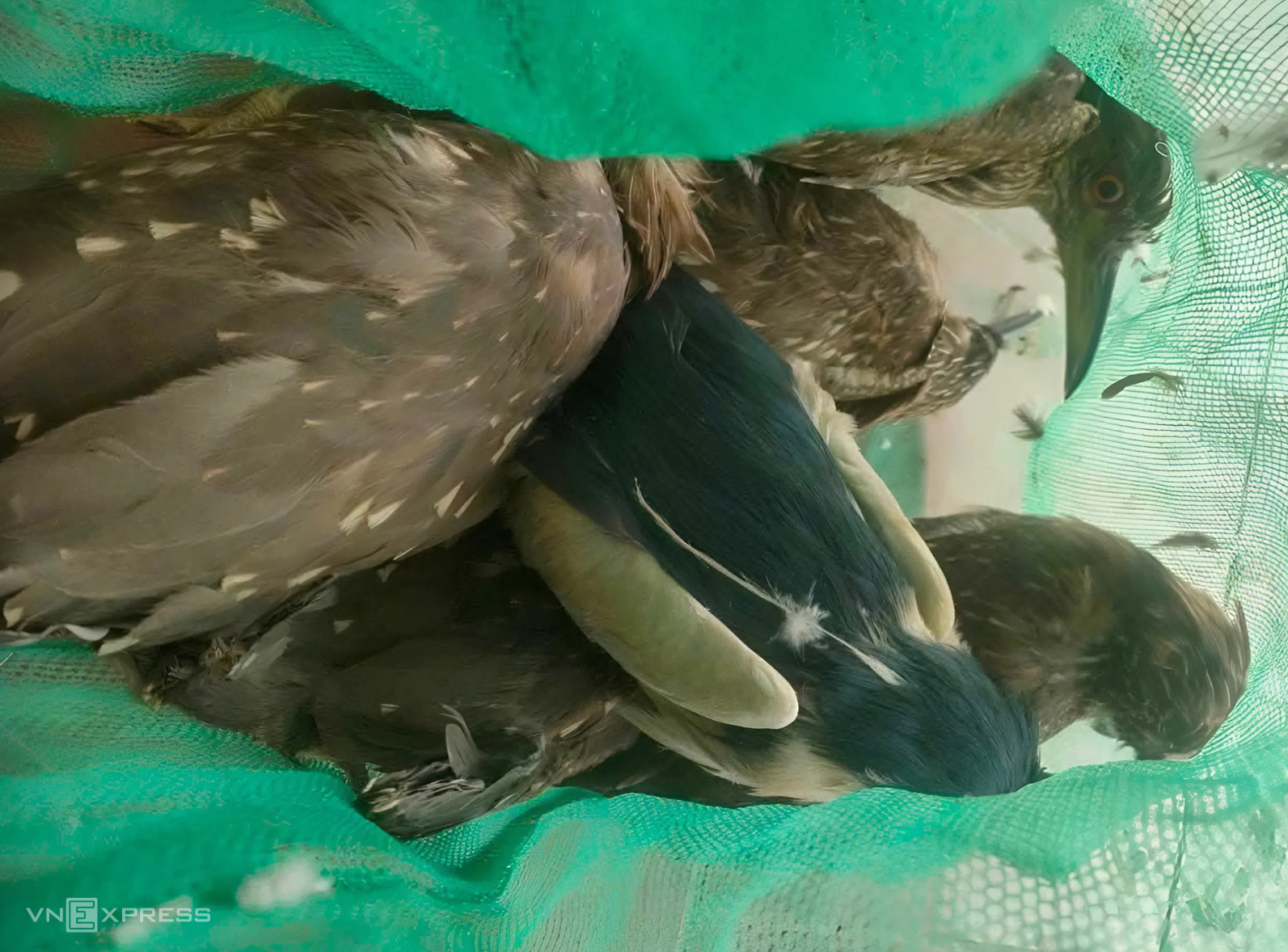 |
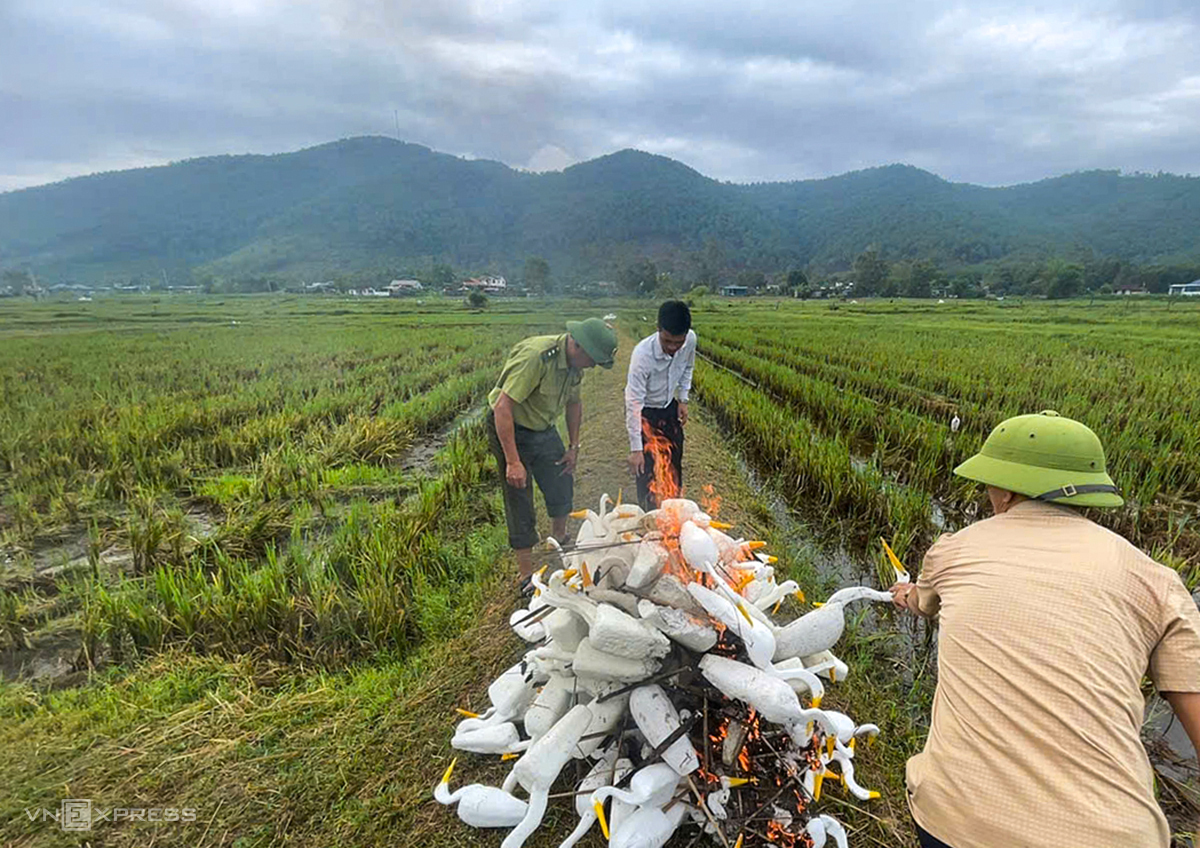 |
Over the past week, forest rangers, police, and military personnel from the communes formerly belonging to Dien Chau district have formed teams to crack down on and remove bird traps in the fields and forests.
Authorities have confiscated and destroyed numerous nets on site. Fake birds have also been collected and piled up for destruction.
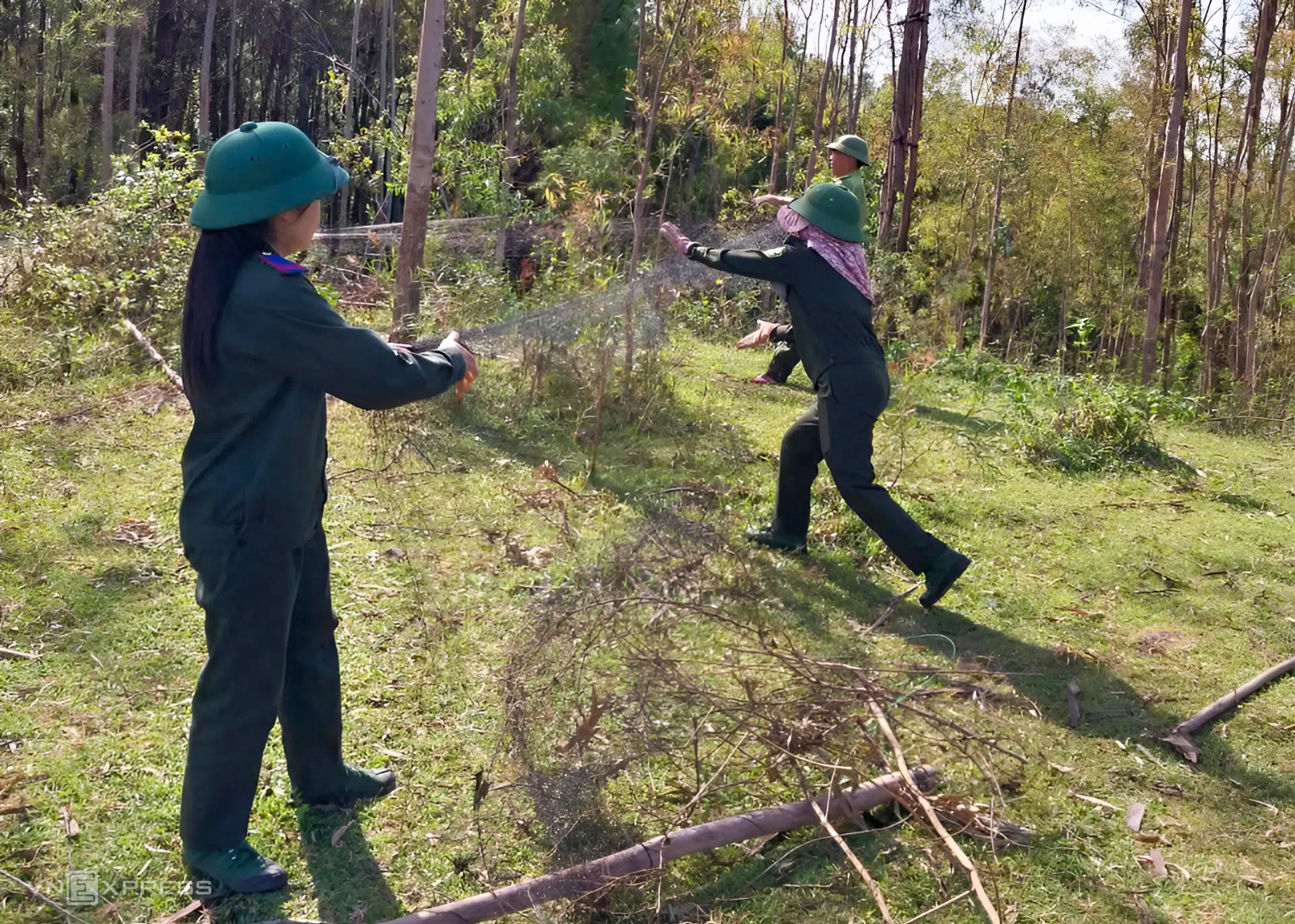 |
Authorities remove densely strung bird nets at the edge of the forest.
According to local authorities, despite regular public awareness campaigns, enforcement remains challenging. Trappers often operate at night in remote areas, making detection difficult. The current penalties are not a sufficient deterrent, leading to repeat offenses.
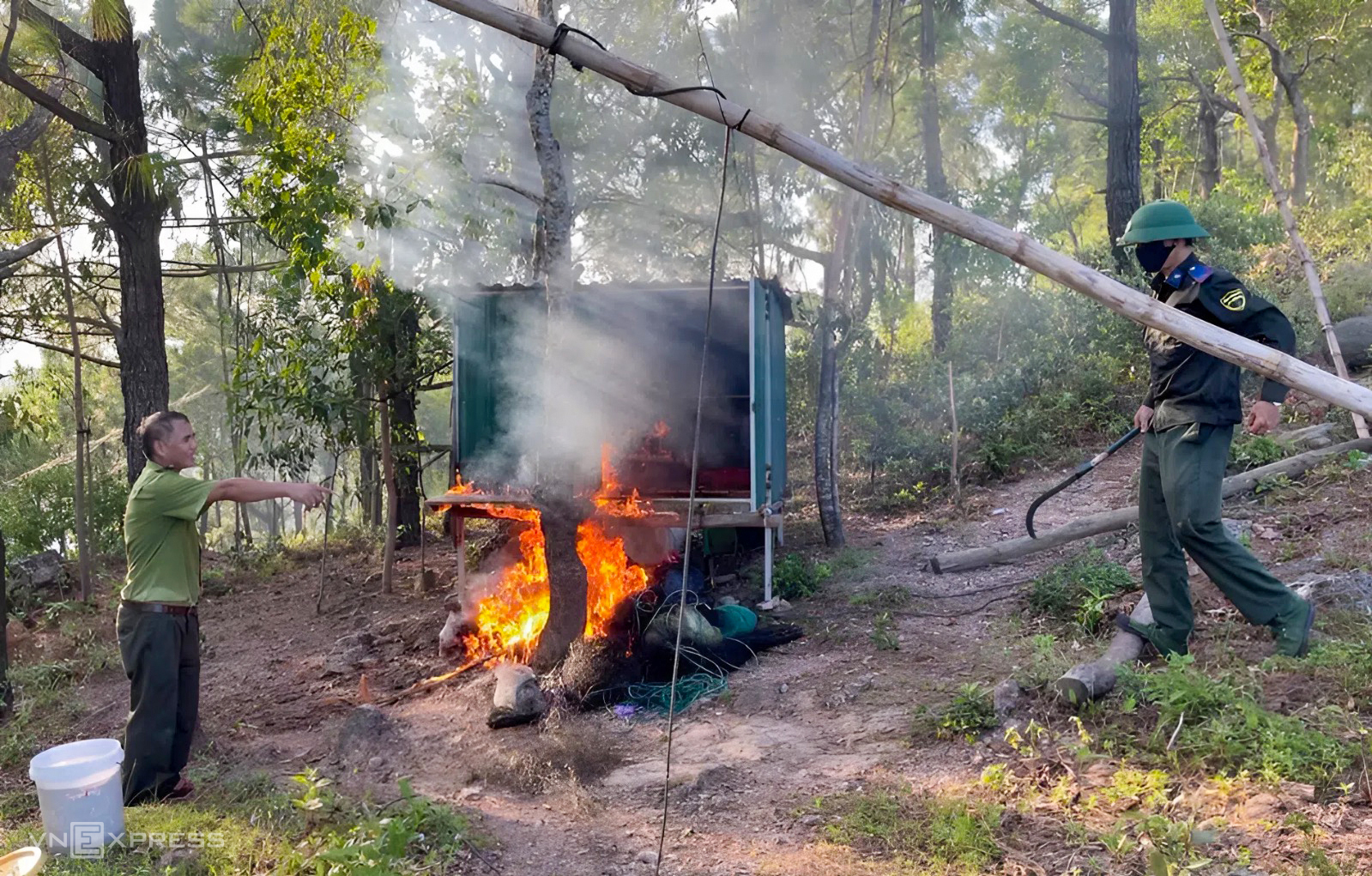 |
The Nghe An Forest Protection Department stated that since 15/9, they have coordinated with local authorities to conduct numerous inspections, confiscating thousands of meters of nets, hundreds of bamboo poles, and dismantling many illegal migratory bird hunting camps.
In the future, forest rangers will continue large-scale crackdowns, completely dismantling trapping equipment and collaborating with other agencies to address the processing, storage, and consumption of wild birds.
Duc Hung












